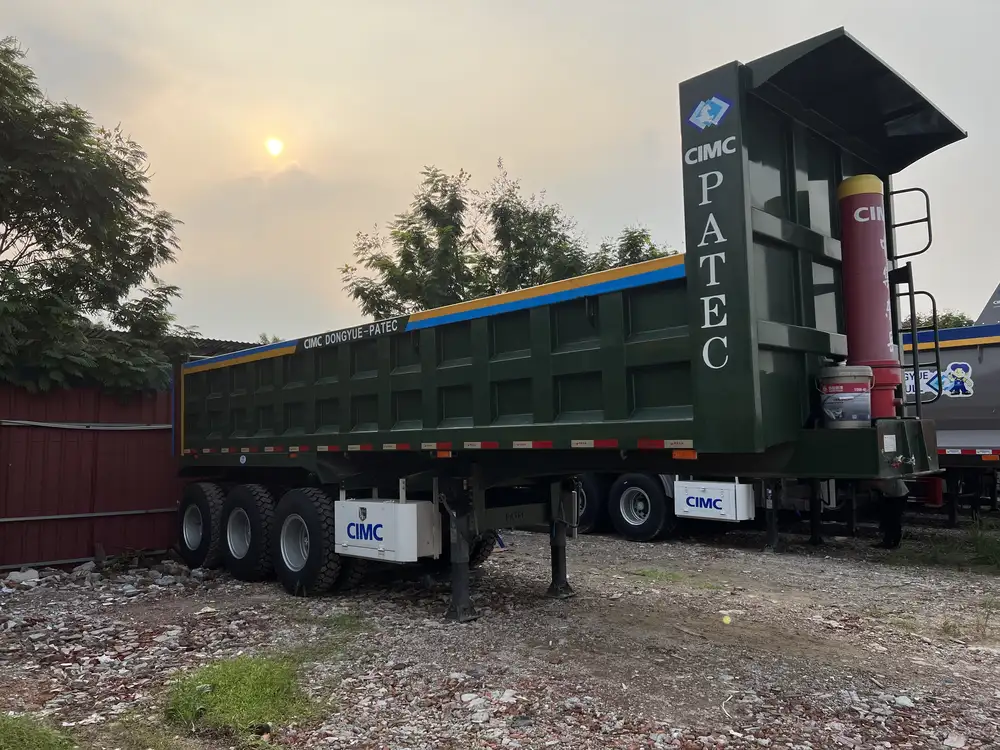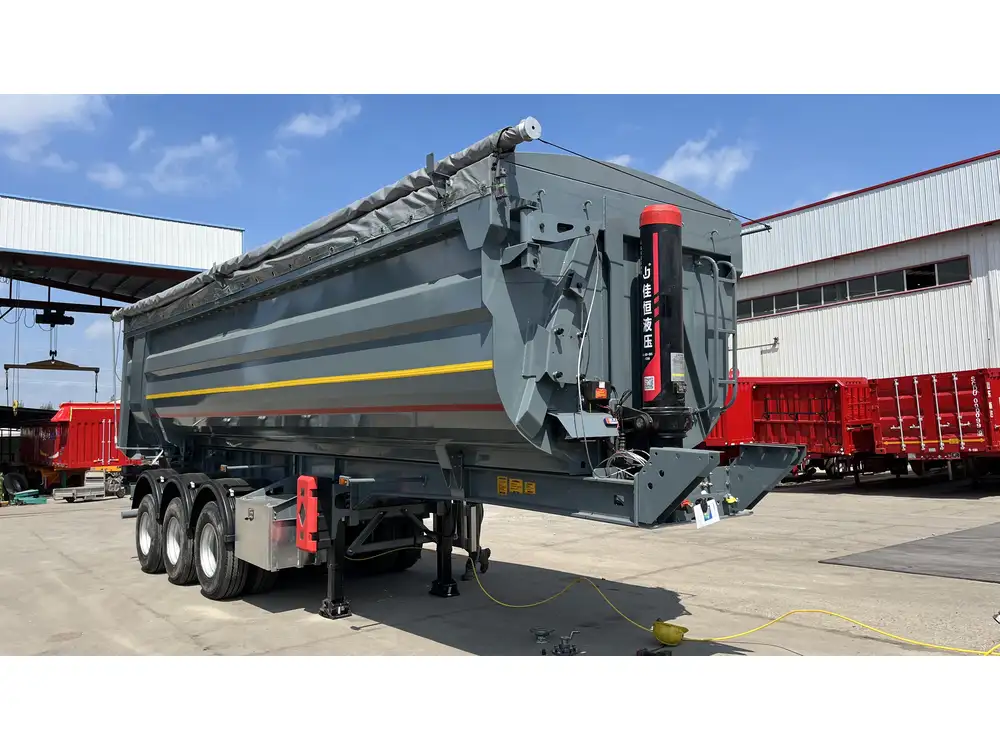When navigating the highways and byways of America’s freight and transportation landscape, understanding the dimensions of semi trucks is crucial for both logistics professionals and casual drivers alike. Specifically, the semi truck with a 53-foot trailer plays a pivotal role in cargo transport, and knowing its length can facilitate better planning on the road.
Overview of Semi Truck Dimensions
To fully grasp the length of a semi truck with a 53′ trailer, it’s important to consider the individual components that make up its overall length. A typical semi truck consists of two main parts:
- The Tractor (or Cab): This is the front part of the semi truck where the driver operates.
- The Trailer: This is the section that carries the cargo. In this case, we are focusing on the 53-foot trailer.
Common Measurements
- Tractor Length: The average semi truck cab typically measures between 16 to 25 feet.
- Trailer Length: A standard trailer that is used in the freight industry measures 53 feet.
Adding these two components together gives us a range for the overall length of a semi truck with a 53-foot trailer.

Calculation of Total Length
| Component | Length (Feet) |
|---|---|
| Tractor (average) | 20 (approximate) |
| Trailer | 53 |
| Total Length | 73 Feet |
Thus, a semi truck with a 53-foot trailer averages around 73 feet in length. However, this measurement can vary based on specific configurations, types of trailers, and additional cargo.
Legal Dimensions and Regulations
Understanding the legal limits of semi truck lengths is invaluable for logistics providers. In many states across the U.S., laws dictate that the maximum allowable length for a semi truck combination is typically 75 to 80 feet. However, these regulations can differ depending on the state and the type of freight:
State Regulations
- California: Maximum legal length is 65 feet for a tractor-trailer combination.
- Texas: Allows lengths of up to 70 feet in many cases.
- New York: Maximum combined length is officially 65 feet.

Importance of Compliance
Noncompliance with state regulations can result in hefty fines, increased scrutiny by authorities, and possible delays in the shipment of goods. For freight companies, being well-versed in the legal dimensions is essential for maintaining operational efficiency.
Trailer Types and Their Impact on Dimensions
While this article focuses on the length of a semi truck with a 53-foot trailer, it’s paramount to mention that there are various types of trailers used in conjunction with semi trucks, which can influence total dimensions significantly.
Common Trailer Types
| Trailer Type | Purpose | Length (Feet) |
|---|---|---|
| Standard | General goods transportation | 53 |
| Reefer Truck | Refrigerated goods | 53 |
| Flatbed | Heavy machinery, construction materials | Typically 48 – 53 |
| Tanker | Liquid transport | Varies (often larger) |

Reefer Trailers
Reefer trailers maintain a controlled temperature environment for perishable goods, influencing their design but maintaining the same base length as standard trailers. Nevertheless, when adding refrigeration units, these trailers can become slightly longer.
Conclusion on Trailer Types
Understanding the various types of trailers helps logistics companies strategize appropriate transport methods based on cargo type, weight distribution, and legal restrictions.
Importance of Knowing the Length for Logistics
For freight companies and truck drivers, knowing the length of their vehicles impacts several aspects of their operations:
- Route Planning: Longer trucks may not be allowed on certain roads or bridges.
- Loading & Unloading: Docking facilities may have space constraints that require precise dimensions.
- Safety: Understanding vehicle lengths helps maintain safe distances on roads, thereby increasing safety for all road users.

The Impact on Fuel Efficiency
The aerodynamic properties of a semi truck can also influence fuel consumption. Longer trucks may face increased wind resistance, affecting the overall fuel efficiency. Additionally, understanding trailer lengths can provide key insights into load management strategies that can enhance fuel economy.
Practical Considerations for Drivers
For truck drivers, knowledge of the truck’s dimensions, including the height and width alongside the length, is fundamental for safe navigation.
Essential Measurement Considerations
- Height: A fully loaded 53-foot trailer can often reach up to 13.5 feet in height.
- Width: The standard width is generally about 8.5 feet.

Tips for Maneuvering
- Use GPS with Truck-Specific Navigation: To avoid low bridges and restricted roads.
- Practice Defensive Driving: Given truck size, ensuring ample stopping distance is essential.
Potential Challenges Faced in Transportation
While a 53-foot semi truck is one of the most commonly utilized transport vehicles, various challenges cannot be overlooked. Addressing these concerns comprehensively leads to better logistics strategies.
Common Challenges
- Traffic Congestion: Longer vehicles may navigate urban landscapes with difficulty, leading to potential delays.
- Clearance Issues: Navigating under bridges or power lines can be problematic due to height restrictions.
- Weight Distribution: Load balancing becomes crucial, especially with varied cargo types.

Solutions for Efficient Transportation
- Route Analysis Software: Using advanced analytics to plan optimal routes can save time and reduce costs.
- Regular Training: Ensuring drivers understand the limitations and operational characteristics of their vehicles will enhance efficiency.
Conclusion: Key Takeaways
Understanding the length of a semi truck with a 53-foot trailer is imperative for a variety of stakeholders in the transportation industry. The total average length can be pinpointed at approximately 73 feet, though various factors such as regulations, trailer types, and operational considerations can affect this measurement.
Logistics professionals must therefore hone their knowledge of legalities, as well as practical implications for implications such as route planning and load management. Enhanced understanding facilitates efficient transport planning, improved safety measures, and optimized operational efficiencies.
By mastering the nuances of semi truck dimensions, especially that of the standard 53-foot trailer, stakeholders can drive better results for their transportation needs. Emphasizing on informed decision-making based on precise measurements will not only enrich logistics practices but also foster a culture of safety and compliance on the roads.
As the freight landscape continually evolves, keeping abreast of these critical dimensions will remain a cornerstone of successful transportation logistics.



